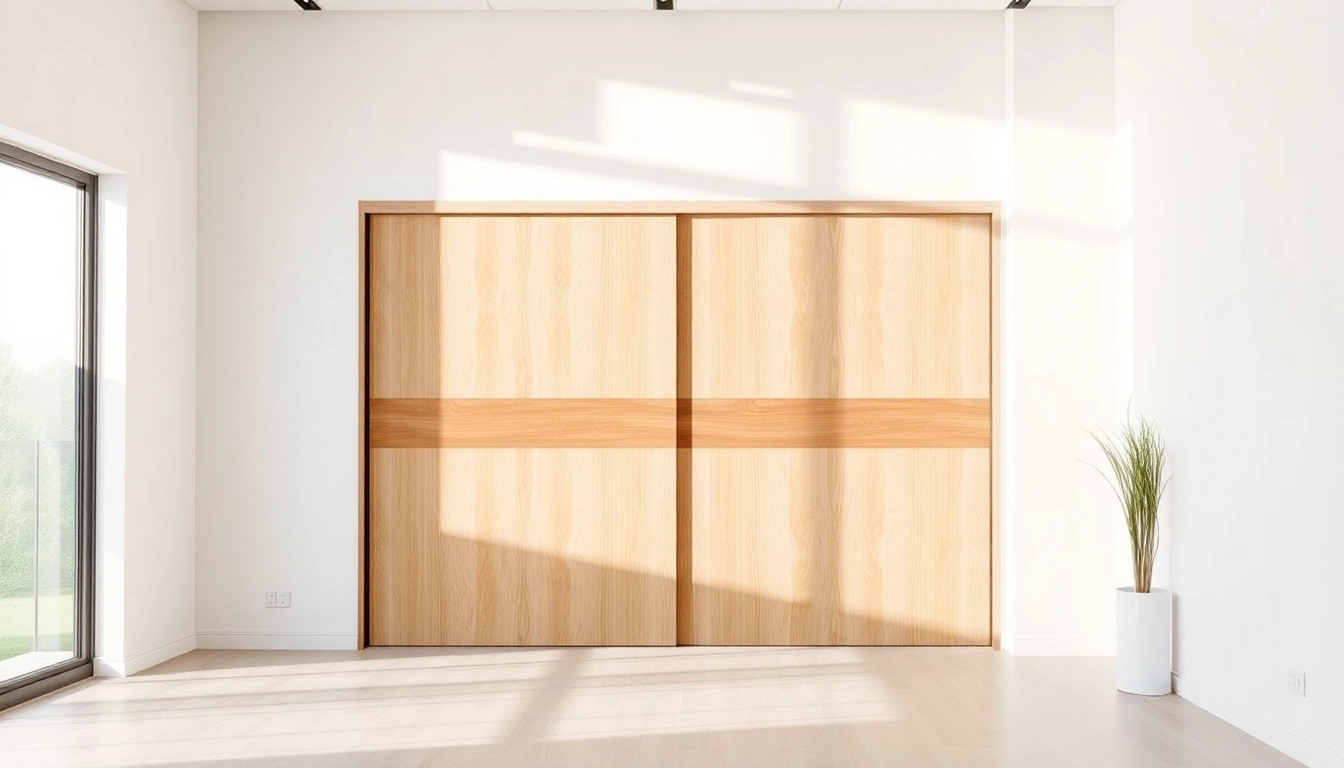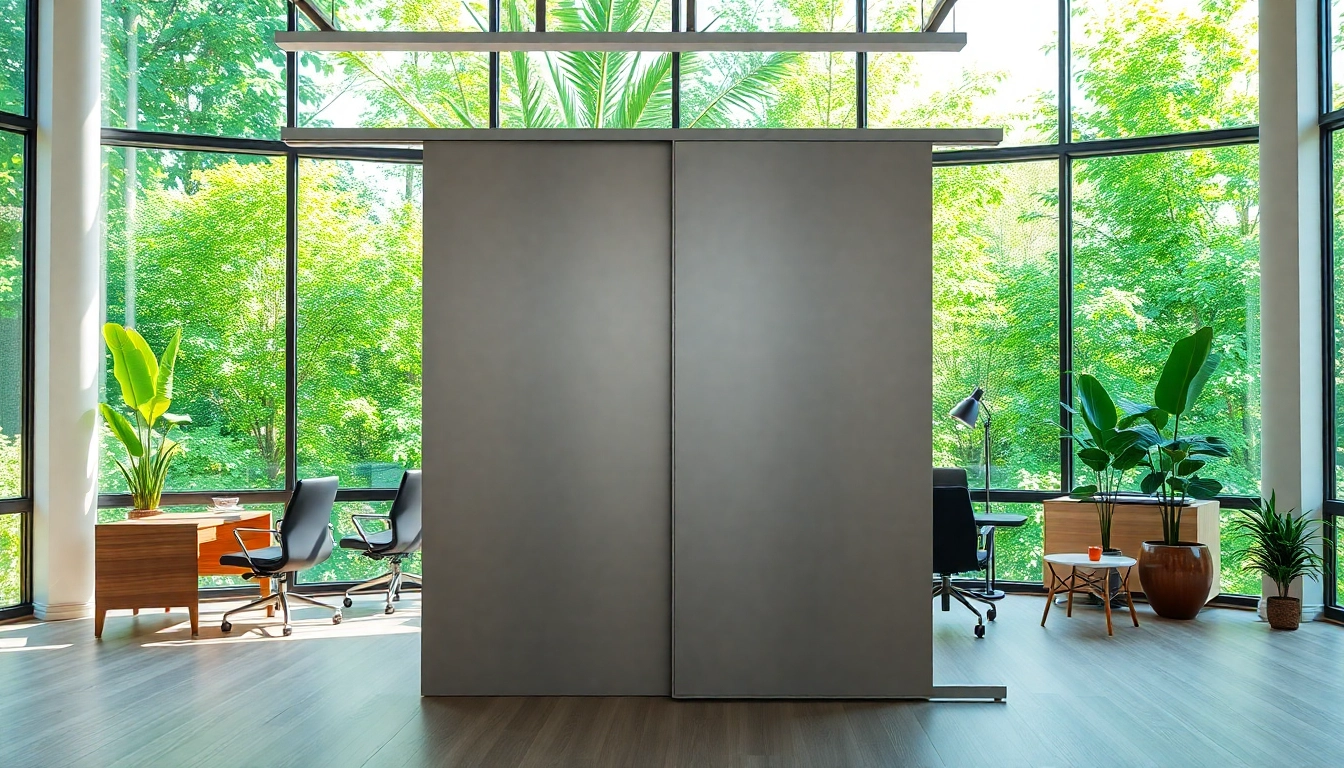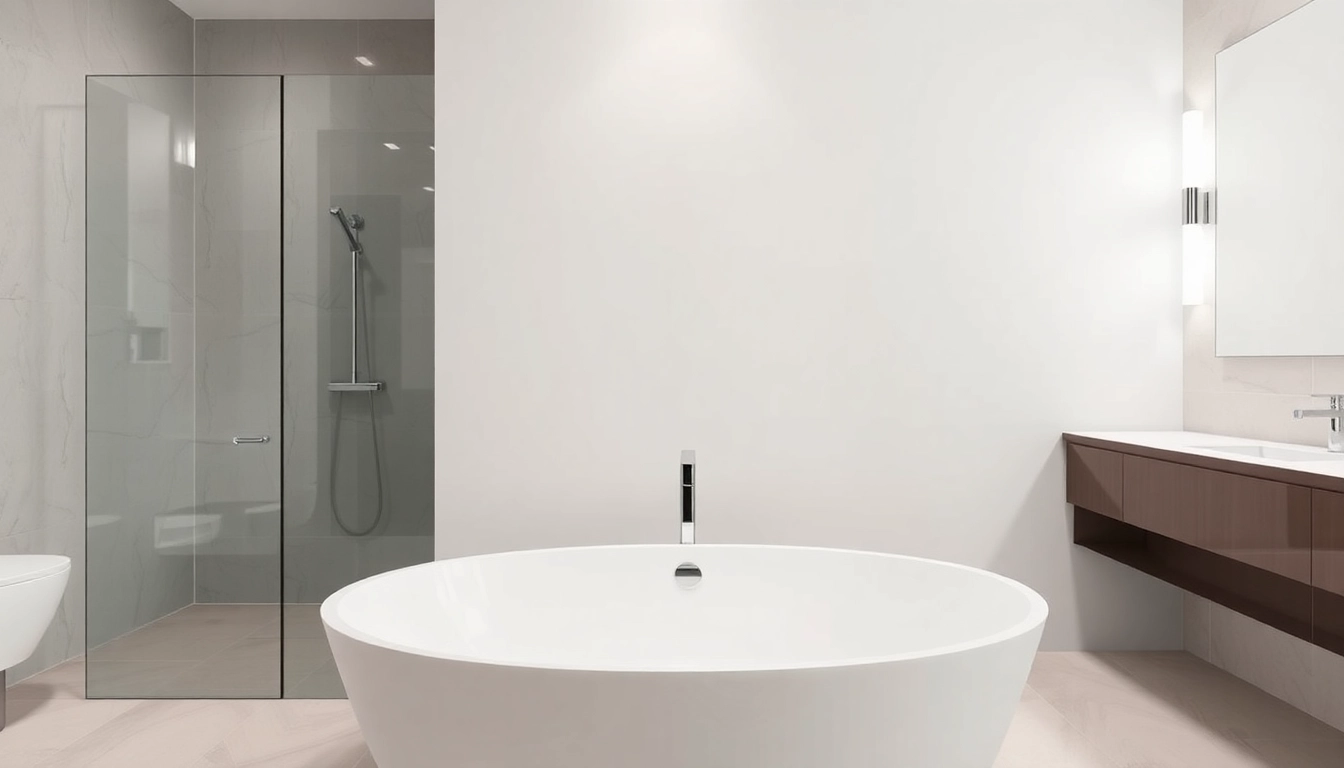Understanding Sliding Partition Walls
What are Sliding Partition Walls?
A sliding partition wall is an innovative solution designed to divide spaces while maintaining functionality and aesthetic appeal. Unlike traditional walls, these partitions can be retracted or expanded to create flexible environments, accommodating various needs throughout the day. They can consist of a myriad of materials including wood, glass, and metal, offering endless design possibilities.
Benefits of Using Sliding Partition Walls
The advantages of incorporating sliding partition walls into your space are manifold. Firstly, they provide adaptability to change the layout of a room with ease. This feature is especially valuable in both residential and commercial settings where the intended use of a space may vary. Additionally, these partitions can enhance privacy while allowing for sound insulation and light control. Their aesthetic versatility contributes to overall interior design, granting spaces a contemporary edge.
Common Applications in Homes and Offices
Sliding partition walls are used in various configurations across different environments. In homes, they can create private areas in open-plan living spaces or be used as closet doors that blend seamlessly into the room’s design. In offices, they are particularly useful for creating conference rooms or individual workspaces from larger areas. This flexibility makes them a strategic choice for businesses looking to maximize the usability of their spaces.
Types of Sliding Partition Walls
Floor-to-Ceiling Models vs. Standard Heights
When choosing a sliding partition wall, one must consider the height of the model. Floor-to-ceiling models offer an elegant and dramatic solution, enhancing the visual appeal of a room while providing maximum separation between spaces. However, standard height options are also available and can be more practical in spaces with lower ceilings. Each has its unique advantages, with the former providing complete privacy and sound-proofing and the latter being more cost-effective and easier to install.
Materials: Wood, Glass, and More
Sliding partition walls can be customized from various materials, each providing distinct benefits. For instance, wood exudes warmth and can be tailored to match existing decor, offering a classic feel. Glass partitions, on the other hand, foster light flow and an open ambiance, making them ideal for modern settings. Additionally, composite materials can also be utilized for specific functional requirements. Industrial metals or fabric can adjust the visual and acoustic experience in a space.
Customizable Designs for Unique Spaces
One of the most significant advantages of sliding partition walls is their customization capability. Many manufacturers offer bespoke design options that allow for personalized dimensions, colors, and finishes. By tailoring the aesthetics to fit the existing decor and specific needs of the space, homeowners and businesses can ensure harmony and coherence in their environments.
Installation Process for Sliding Partition Walls
Preparing Your Space for Installation
Before installation, it’s essential to adequately prepare the space. This includes accurate measurements of the area and determining whether the structure can support the partition’s weight. If you’re opting for a ceiling-mounted system, check that the ceiling can handle the additional load.
Steps to Ensure Proper Installation
Installing a sliding partition wall involves several critical steps:
- Measure and Mark: Begin by measuring the wall space. Mark where the track will be installed.
- Install the Track: Using anchors and screws, secure the track to the wall or ceiling.
- Attach the Panels: Hang the panels on the track according to the manufacturer’s instructions.
- Test the Mechanism: Ensure the panels slide smoothly along the track.
DIY vs. Professional Installation: Pros and Cons
Choosing between DIY installation or hiring professionals involves considering both budget and skill level. While DIY can save costs, it may involve challenges such as incorrect measurements or installation errors if you lack experience. On the other hand, professional installation guarantees proper fitting and functionality, although it comes at a higher price. Ultimately, the choice depends on your confidence and expertise in home improvement projects.
Maintaining Your Sliding Partition Wall
Regular Cleaning and Care Tips
Proper maintenance of your sliding partition wall enhances its longevity and functionality. Regular dusting is crucial, especially for wood and glass materials, to prevent dirt accumulation. For glass, using a suitable glass cleaner ensures clarity, while wood finishes may need periodic polishing to retain their sheen.
Common Maintenance Issues and Solutions
Over time, sliding partition walls may face specific maintenance challenges. Common issues include:
- Sticking Panels: If panels become difficult to slide, inspect the track for obstructions or debris and clean accordingly.
- Misalignment: Regularly check that the panels are aligned correctly; misalignment can occur due to wear and tear.
- Noisy Operation: If the sliding is accompanied by noise, lubrication of the track can restore smooth functioning.
How to Enhance Durability Over Time
To ensure a long lifespan for your sliding partition wall, it’s advisable to avoid excessive force while sliding and ensure that the weight limits specified by the manufacturer are not exceeded. Additionally, periodic professional inspections can identify potential issues before they worsen, providing you with peace of mind.
Innovative Uses for Sliding Partition Walls
Creating Flexible Spaces in Home Design
Sliding partition walls offer creative solutions in home design, allowing for adaptable spaces that can be reconfigured for different activities. For example, in a small apartment, a sliding wall can separate the bedroom from the living area, creating a cozy sanctuary for sleep without compromising the sense of space.
Utilizing Sliding Partition Walls in Commercial Spaces
In commercial settings, the use of sliding partition walls fosters flexibility and productivity. Businesses can easily transform open spaces into conference rooms or breakout areas as needed. This adaptability not only enhances the workspace but also promotes collaboration among employees.
Maximizing Space Efficiency with Creative Layouts
By deploying sliding partition walls, homeowners and businesses alike can maximize space efficiency. Utilizing these walls allows for the creation of multipurpose rooms—an essential asset in urban environments where space is often limited. The ability to easily reconfigure the space promotes dynamic usage, catering to the diverse needs of occupants.



